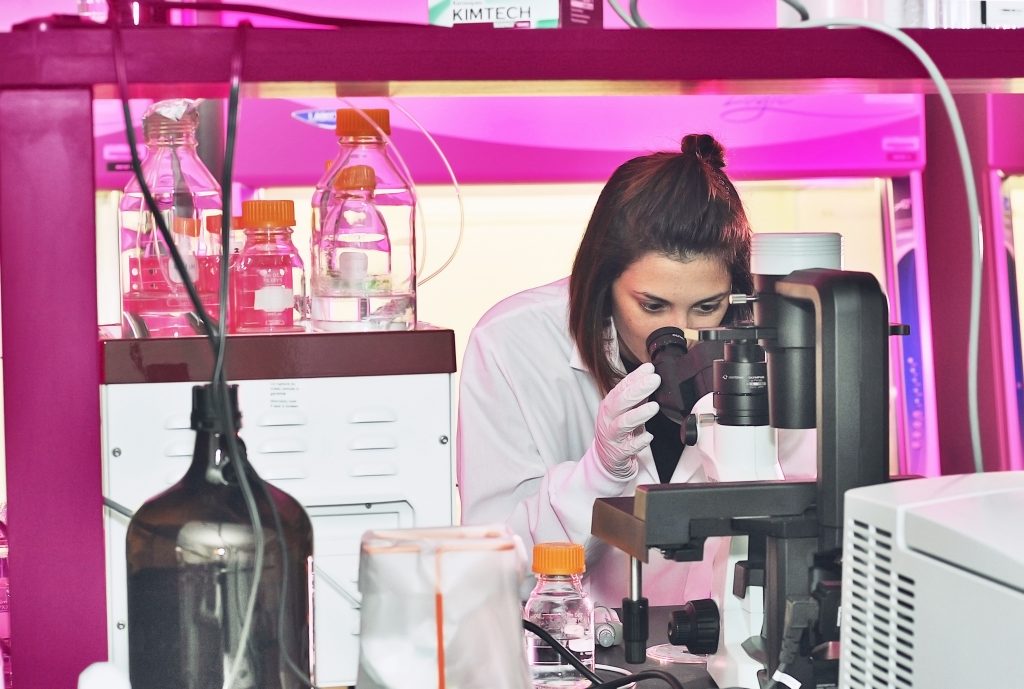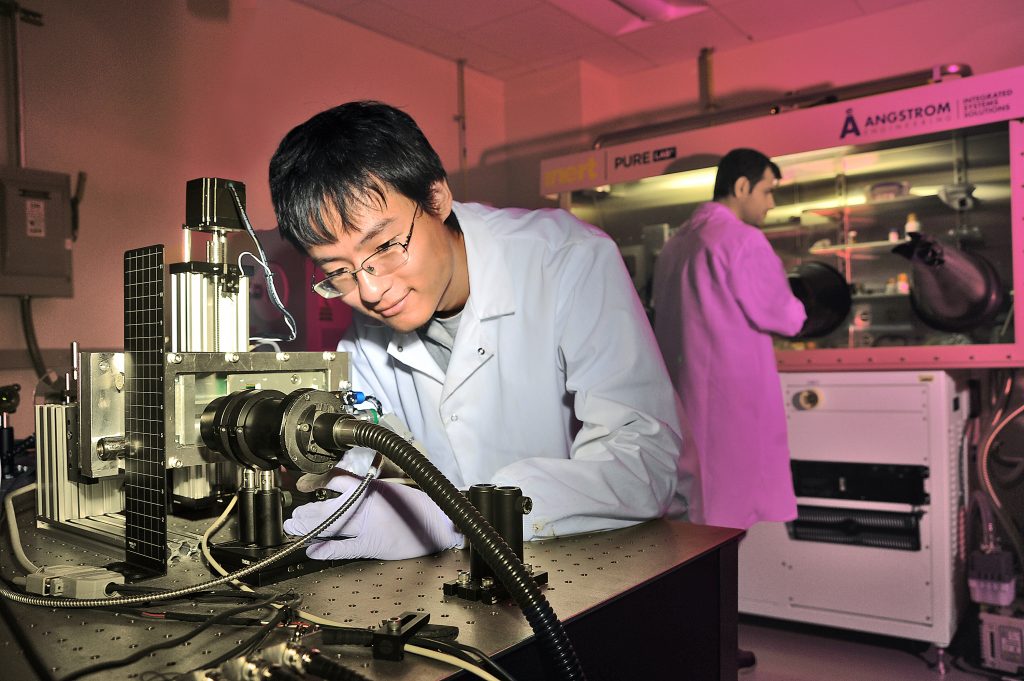Photonics technologies are essential for delivery of effective and low-cost diagnosis, treatment, and prevention of disease. Applications in medicine span from elective vision correction and minimally invasive surgeries to characterization of the human genome. In the future, we may see bedside clinical analyses and diagnoses using photonics.
New light-based technologies will help optimize individual responses to medications while minimizing side effects: health care costs will be reduced as costly late intervention procedures are curtailed and hospital stays shortened.

The Star Trek Tractor Beam is reality. UCF researchers are on the forefront of imaging through tissue and moving cells with light – which offers the potential to harness the healing power of stem cells and guide them to areas of the body that need help.
Medical imaging is key to many health-related needs, both for understanding the status of a patient and for guiding and implementing corrective procedures. Real-time images using fluorescent biomarkers that selectively bind to tumor cells provide a clear demarcation between healthy and diseased tissue during surgery.
Source: Trinity College Dublin


Biophotonics deals with the interaction of electromagnetic radiation with living organisms and biologically active macromolecules: proteins (hemoglobin), nucleic acids (DNA and RNA), and metabolites (glucose and lactose). At both high (x-ray) and low (radio frequency) energies the body is mostly transparent, thus allowing the non-invasive imaging of the internal structure of organs and bones.
Biophotonics research is driving advances that, together with improved medical instrumentation, will save lives and provide business opportunities. Optics and photonics (sources and materials, imaging devices, and microfluidics) provide unprecedented speed, sensitivity, selectivity and resolution for biomedical instrumentation to aid the physician.

Related Courses found in the B.S. in Photonic Science and Engineering Program at UCF:

The course covers three topics: 1) The optical fiber as a transmission channel. 2) Optoelectronic devices used in transmitters, receivers, and multiplexers. 3) Design of the overall communication system and assessment of its performance.

Biophotonics is an emerging multidisciplinary field where light-based methods are utilized to reveal biological mechanisms, and diagnose or treat several diseases. This course introduces the basics of biology and photonics, and provides examples from chemistry, biology, pharmacology and medicine. It includes how to detect and identify new viruses and how to manipulate the brain of mice with light.

This course introduces the basic principles of two- and three-dimensional imaging systems. It includes the mathematics of image formation as a linear system and introduces point spread function, transfer function, resolution, and restoration. Objects such as microscopes, telescopes, and copiers operating in the gazing and scanning configurations are modeled and their resolution assessed. Interferometric imaging systems and their applications in metrology are described.

This course is an introduction to optics of the human eye. It includes optical and neural processing of temporal, spatial, and color information. The performance of the visual system in tasks such as change detection, brightness and texture discrimination, and recognition are introduced. Various theories of depth perception are introduced along with cues for 3D display. Spectral colors and color reproduction in the printing and display industry, colorimetry and color image processing are included.